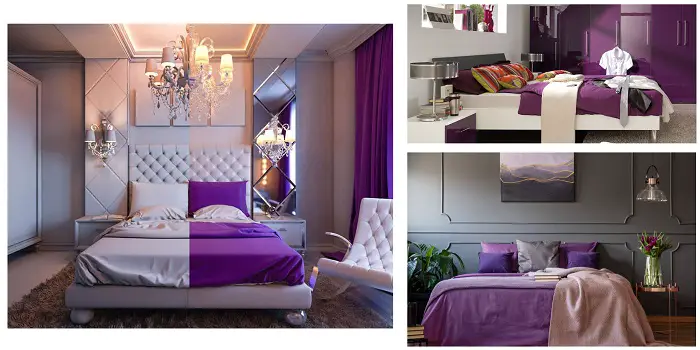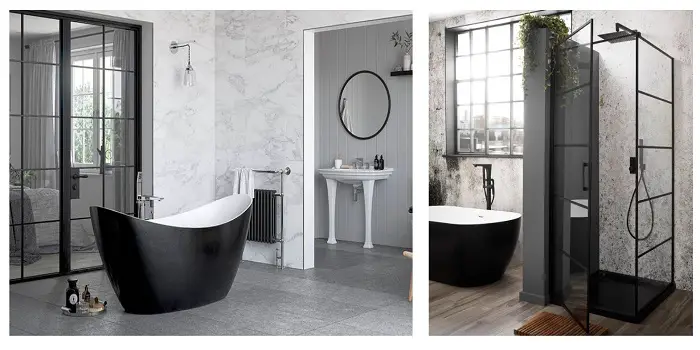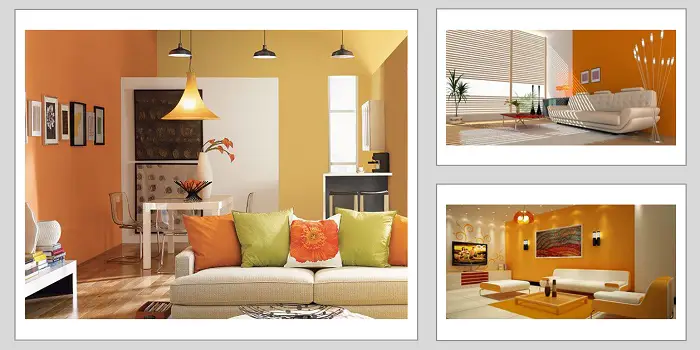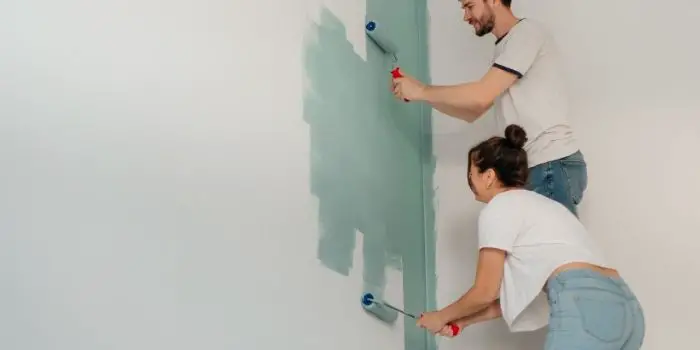
You may be wondering if you can paint your walls with metallic paint.
The answer is yes. If you’re looking for a way to add some pizzazz to your home, painting your walls with metallic paint is a great option. In fact, with the right kind of metallic paint, you can give your walls a modern and stylish look that you’ll love to view and experience.
However, there are a few things you should keep in mind before you start.
First, metallic paint can be quite difficult to apply evenly. If you’re not careful, you may end up with streaks or inconsistencies in your paint job.
Secondly, most metallic paint can be very reflective, so it’s important to research a bit and choose a color you’re happy with. Otherwise, you may find yourself constantly staring at your own reflection.
Also be aware that metallic paint is typically more expensive than regular paint, so be prepared to spend a bit extra on your project.
Further in this article, I will show you what kind of metallic paint to use and some examples of how it can be used to create beautiful unique walls.
What's Here in the Article:
The Best Metallic Paints For Walls
Metallic paint is made with finely ground metal flakes suspended in latex or oil-based binder. The amount of metal flakes in the paint determines the level of reflectivity. The most common metal flakes used in metallic paint are aluminum, bronze, and copper.
Some of the best metallic paints you can use for your walls are listed below. These all are easy to apply, go on smoothly, and dry quickly, so you won’t have to worry about streaks or smudges while achieving a consistent finish. Plus, they come in various colors to find the perfect shade for your home.
- Modern Masters MM591 Matte Metallic Paint
- Rust-Oleum Universal All Surface Metallic Paint
- Valspar Signature Metallic Paint
- Benjamin Moore Aura Metallic Paint
- Sherwin-Williams Infinity Metallic Paint
- Olympic One Metallic Paint
- Rust-Oleum Metallic Accents Paint in Metallic Silver
How to Paint Walls With Metallic Paint?
Painting walls with metallic paint will definitely add a unique and luxurious touch to your room provided you follow all the steps cautiously. So, to get you started, here’s a step-by-step guide to help you achieve a stunning finish:
1- Protect and Prepare: Start by covering the floor and any furniture in the room with drop cloths or plastic sheeting to protect them from paint splatters. Use painter’s tape to protect nearby edges and surfaces to the walls.
Then clean the walls thoroughly to remove any dust, dirt, or grease. Patch any holes or cracks with the spackling compound, and sand them smooth once dry. If the walls have a glossy finish, lightly sand them to create a rough surface for better paint adhesion.
2- Prime the Walls (if necessary): Depending on the type of metallic paint you’re using and the condition of your walls, you may need to apply a primer first. A primer (suitable for metallic paints) will help achieve better adhesion and coverage, especially if you’re painting over a dark or uneven surface.
3- Choose Your Metallic Paint: There are various types of metallic paint available, including solvent-based options that are available in easy-to-use spray cans. Read the manufacturer’s instructions carefully to determine the best type for your project.
If it’s a small wall you want to decorate you can use a spray can. But if it’s a large section of the wall it’s better to use a regular brush and roller to apply the paint from the can.
You can mix metallic paint with regular paint, if you want. But keep in mind that it might alter the properties of both paints. This means when mixing metallic paint with regular paint, the metallic particles in the metallic paint will likely affect the color and sheen of the resulting mixture.
Additionally, the metallic particles may settle differently compared to the pigments in regular paint, so thorough mixing and testing may be necessary to achieve the desired effect. It’s always a good idea to perform a small test patch to see how the mixed paints behave before applying them to your entire project.
4- Apply the Metallic Paint and Allow it to Dry: Cut in around the edges of the walls with a synthetic brush, using smooth and even strokes. Synthetic brushes are best for applying metallic paint, as they won’t absorb as much paint and will provide a smoother finish.
Then, use a roller to apply the metallic paint to the larger sections of the wall. Work in small sections, applying the paint in thin, even coats. Be sure to overlap each stroke slightly to avoid streaks or uneven coverage. If you need to reach the nooks and crannies of your walls without leaving any brush strokes behind use a roller with a long handle.
Metallic paint may require longer drying times than standard latex paint. Follow the manufacturer’s instructions regarding drying times between coats. Typically, you’ll need to wait at least a few hours before applying additional coats.
5- Apply Additional Coats (if necessary): Depending on the desired level of coverage and intensity of the metallic effect, you may need to apply multiple coats of paint. Do not forget to allow each coat to dry completely before applying the next one.
For added depth and richness, you can consider applying a clear glaze or topcoat over the metallic paint once it has dried completely. This can also help protect the finish and enhance its durability.
Once you’re satisfied with the coverage and finish, carefully remove any painter’s tape and allow the paint to cure fully before rehanging any artwork or decorations.
Clean your brushes and rollers with soap and water if you used water-based paint, or with the appropriate solvent if you used a solvent-based paint.
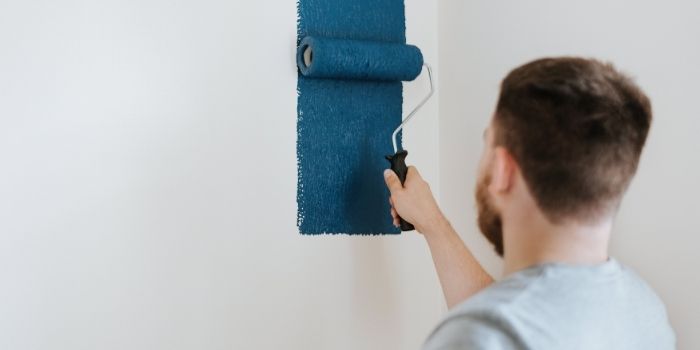
What Metallic Paint Colors to Choose for Walls?
When choosing metallic paint colors, consider the existing decor, lighting, and overall atmosphere you want to achieve in each room. It’s also a good idea to test paint samples on the walls to see how they look in different lighting conditions before making a final decision. Here are a few ideas to get you started:
- Living room: Metallic gold or silver paint can add a touch of elegance to your living room. These reflect light well, making the room appear brighter and more spacious for entertaining guests.
- Kitchen: Silver or copper metallic paint can give your kitchen a sleek, modern look.
- Dining Room: Deep silver and antique brass provide a dramatic and glamorous backdrop for special occasions and dinner parties.
- Bedrooms: Metallic blue or green paint can create a calming atmosphere in your bedroom.
- Bathrooms: Metallic bronze or brass paint can add a touch of luxury to your bathroom.
- Accent walls: Metallic black or red paint can make a statement on an accent wall.
- Children’s rooms: Metallic pink or purple paint can add a touch of fun to your child’s room.
- Offices: Metallic gray or white paint can give your office a professional look.
- Outdoors: Metallic green or blue paint can give your outdoor spaces a fresh, modern look.
Picking the perfect metallic paint color for your walls is a matter of personal preference. But, no matter what color you choose, follow the tips above to help you achieve a beautiful, professional-looking finish.
Things To Consider Before Buying the Best Metallic Paint For Walls
Buyers frequently go to the market without a firm grasp on the top items. This negligence can lead to buying the wrong product. You don’t want this, so you must take some time to familiarize yourself with the key aspects of metallic paint before you make your investment…
1. The Type of Paint
Metallic paint is available in both water-based and oil-based formulas. Water-based metallic paint is easier to apply and clean up, but it may not provide as much durability as oil-based paint.
2. The Type of Color and Finish
Metallic paint possesses a high level of reflectivity, so selecting a color that you’re content with is paramount. Otherwise, you might inadvertently spend more time admiring your reflection than focusing on your surroundings.
Also, metallic paint is available in both high-gloss and low-gloss finishes. High-gloss paint will give your walls a shiny, reflective finish, while low-gloss paint will provide a more subtle, metallic sheen.
3. The Price and Your Project
Metallic paint is best suited for smaller projects, such as accent walls or trim work. If you’re planning on painting an entire room with metallic paint, use a primer beforehand to help ensure an even, consistent finish.
Additionally, keep in mind that metallic paint is typically more expensive than regular paint. But, it’s important to remember that you’ll only need to use a small amount of metallic paint to achieve the desired effect. So, even though it may cost more upfront, it will save you money in the long run.
Share the post "Can Walls Be Painted with Metallic Paint?"

Douglas Becker (aka Painter Doug) has over twenty years of experience as a painter in Adkins, Texas. At present, he resides in Florida with his family.
From painting multi-storeyed houses, condos, and apartments to large commercial buildings and small offices, he had served various customers in areas not only in Adkins but also in Southwest Florida, Sarasota, Naples, and many more. To know more about him check here.


